Economics for production of Oyster mushroom in Tonnes per annum (TPA)
Select production range for economics
3.5 to 4 TPA7 to 7.5 TPA
95 to 100 TPA
Economics of Oyster Mushroom Cultivation
Oyster mushroom (Pleurotus spp.), commonly known as “Dhingri” in India, is a lignocellulose loving fungus growing in nature on living or dead tree trunks/stumps or bark. They are easily recognized in nature due to their peculiar morphology with an eccentric short stem or stipe. Cultivation technology of oyster mushroom is very simple which does not require costly infrastructure facilities. The cultivation of oyster mushroom in India is mainly done in seasonal low cost growing rooms with very less expenditure on infrastructure. One can hardly find a big oyster mushroom growing unit in India having round the year production. There is no organized market where one can sell his produce or purchase fresh or dry oyster mushroom throughout the year. Therefore, the production of oyster mushroom on a commercial scale is rare in our country as compared to Agaricus bisporus (button mushroom). Theoretically each crop takes 45 days and under controlled conditions and hence there can be 8 crops per year.
The oyster mushroom is one of the most suitable fungal organism for producing protein rich food from various agrowastes without composting. This mushroom is cultivated in about 25 countries of far-east Asia, Europe and America. It is the 3rd largestcultivated mushroom in the world. China alone contributes 88% of the total world production. The other major oyster producing countries are South Korea, Japan, Italy, Taiwan, Thailand and Philippines. At present India produces annually 10,000 tons of this mushroom. It is popularly grown in the states of Orissa, Karnataka, Maharashtra, Andhra Pradesh, Madhya Pradesh, West Bengal and in the North-Eastern States of Meghalaya, Tripura Manipur, Mizoram and Assam.

Layout plan for an Oyster Mushroom Production unit

A low cost oyster mushroom house
A. Advantages of Growing Oyster Mushroom
1. Variety of substrates
Pleurotus mushroom can degrade and grow on any kind of agricultural or forest wastes, which contain lignin, cellulose and hemicellulose.
2. Choice of species
Among all the cultivated mushrooms Pleurotus has maximum number of commercially cultivated species suitable for round the year cultivation. Moreover, variation in shape, colour, texture, and aroma are also available as per consumer’s choice.
3. Simple Cultivation Technology
Pleurotus mycelium can grow on fresh or fermented straw and it does not require composted substrate for growth. Substrate preparation for oyster mushroom is very simple. Further this mushroom does not require controlled environmental conditions like A. bisporus as most of the species have very wide temperature, relatively humidity and CO2 tolerance.
4. Longer shelf life
Unlike white button mushroom, the oyster mushroom fruit bodies can be easily dried and stored. Dried oyster mushrooms can be instantly used after soaking in hot water for 5 to 10 minutes or it can be used in powdered form for several preparations. Fresh mushrooms have a shelf life of 24-48 h even at room temperature.
5. Highest productivity
The productivity of oyster mushroom per unit time is very high as compared to all other cultivated mushrooms. One can harvest minimum of about 500 to 700 kg of fresh oyster mushroom from one ton of dry wheat or paddy straw in 45-60 days, while with the same quantity of straw only about 400-500 kg of white button mushrooms are obtained in 80-100 days (including period needed for compost preparation). Yield of this mushroom can further be increased by supplementing the substrate with suitable nitrogen source viz., soybean and cottonseed meal or by introducing high yielding cultures/strains. The present day cultivation technology of oyster mushroom is a result of various successive steps evolved throughout the world during 20th century. A very primitive form of growing Pleurotus spp. was adopted by Lumberman in Europe during 19th century that involved collection of wood logs and stumps showing fructification in nature and keeping them in cool and moist places. First successful experimental cultivation of Pleurotus ostreatus was achieved in Germany by Falck in 1917. In India cultivation of P. flabellatus on paddy straw was reported by Bano & Srivastava in 1962 at CFTRI, Mysore. Kaul and Janardhanan (1970) cultivated a white form of P. ostreatus on dried Euphorbia royleana (Thor) stems. Jandaik and Kapoor in 1974 could grow P. sajor-caju on various substrates including wheat and banana pseudostems.
B. The Biology of Oyster Mushroom
Visually the basidiocarps or fruit bodies of an oyster mushroom have three distinct parts - a fleshy shell or spatula shaped cap (pileus), a short or long lateral or central stalk called stipe and long ridges and furrows underneath the pileus, called gills or lamellae. The gills stretch from the edge of the cap down to the stalk and bear the spores. If a fruit body is kept on a paper directly (gills facing the paper) a dirty white or lilac deposition of powdery spores can be seen. The spore print colour may be whitish, pinkish, lilac or grey The spores are hyaline, smooth and cylindrical. The spores are heterothallic and germinate very easily on any kind of mycological media and within 48-96 h whitish thread like colonies could be seen. The mycelium of most Pleurotus spp. is pure white in colour. P. cystidiosus and P. columbinus forms coremia like stalked structures (asexual spores). Basidiospores on germination forms primary mycelium. Fusion between two compatible primary mycelia develops into secondary mycelium, which is having clamp connections and is fertile. Primary mycelium is clampless and non-fertile.
C. Varieties of Oyster Mushroom
All the varieties or species of oyster mushroom are edible except P. olearius and P. nidiformis, which are reported to be poisonous. There are 38 species of the genus recorded throughout the world (Singer). In recent years 25 species are commercially cultivated in different parts of the world, which are as follows: P ostreatus, P. flabellatus, P. florida, P. sajor-caju, P. sapidus, P. cystidiosus, P. eryngii, P. fossulatus, P. opuntiae, P. cornucopiae, P. yuccae, P. platypus, P. djamor, P tuber-regium, P. australis, P. purpureo-olivaceus, P. populinus, P. levis, P columbinus, P. membranaceus etc.
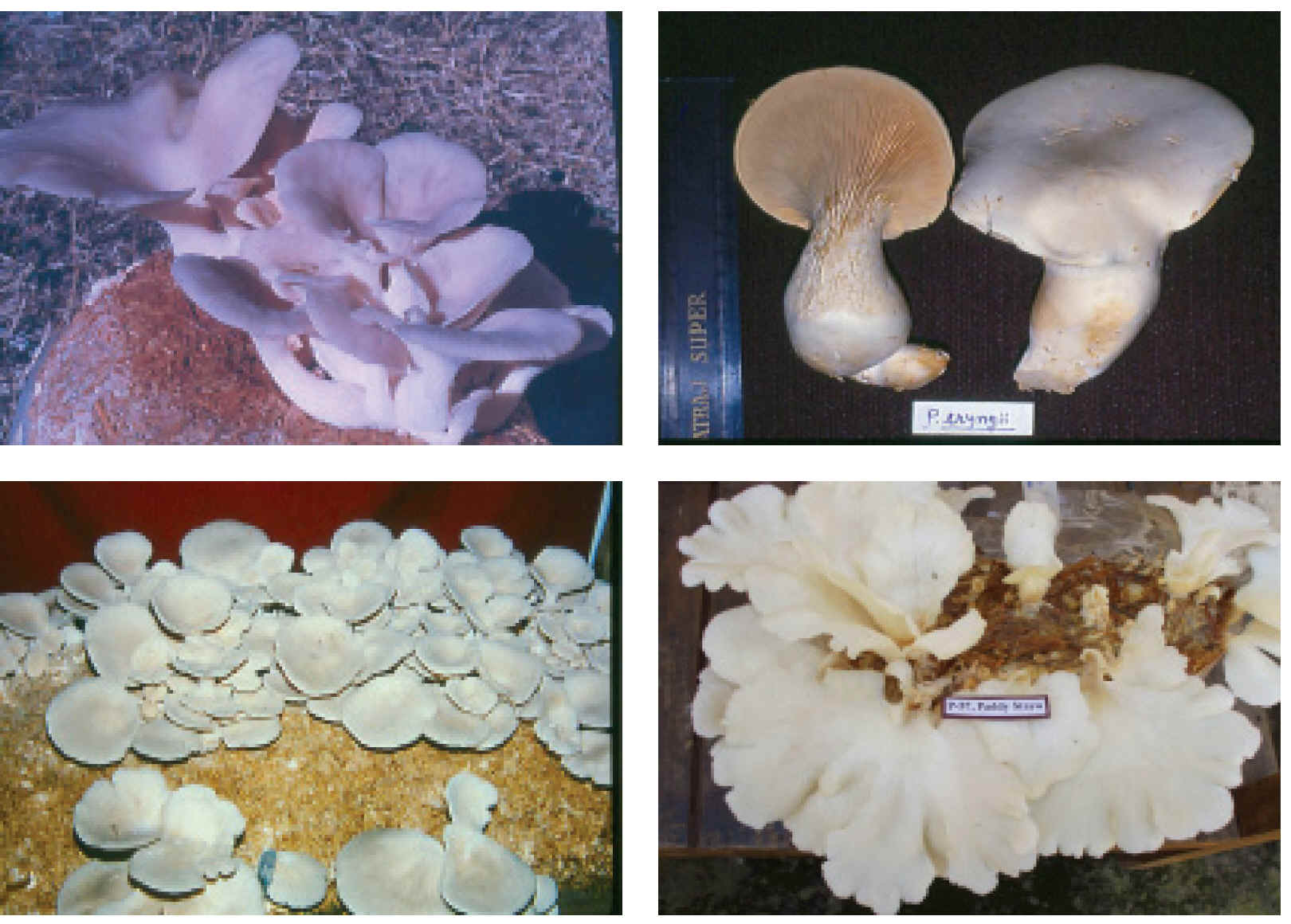
Different types of cultivated Pleurotus species
3.5 to 4 TPA
Economics of oyster mushroom cultivation by chemical sterilization technique
A. Economics of Oyster Mushroom Cultivation in Polyhouse (3.5 to 4 TPA)
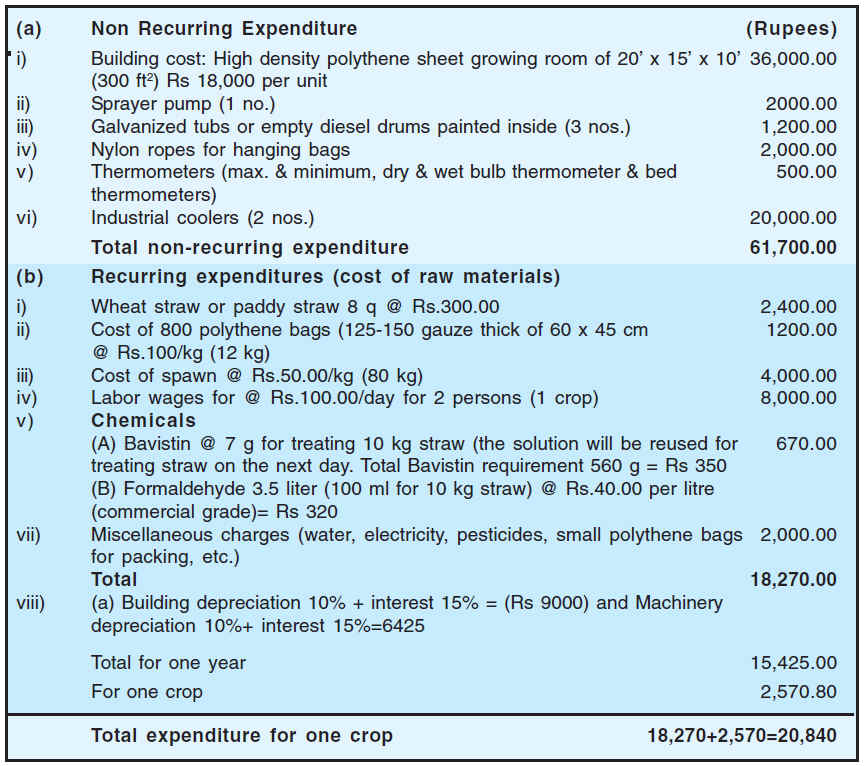

B. Economics of Oyster Mushroom Cultivation in Mud House (7 to 7.5 TPA)
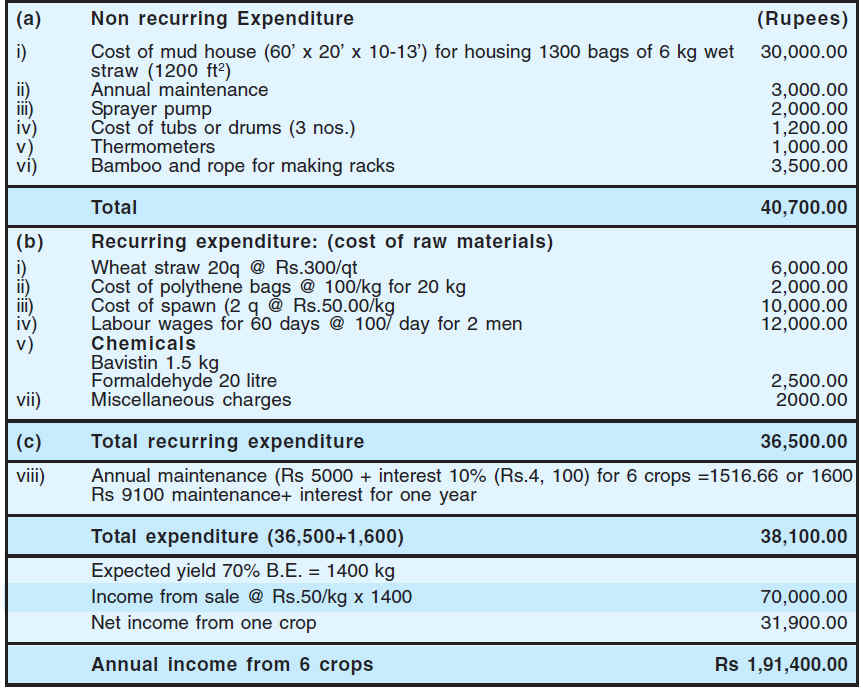
95 to 100 TPA
C. Economics of Oyster Mushroom Unit (95 to 100 TPA)
1. (a) Total Infrastructure Required
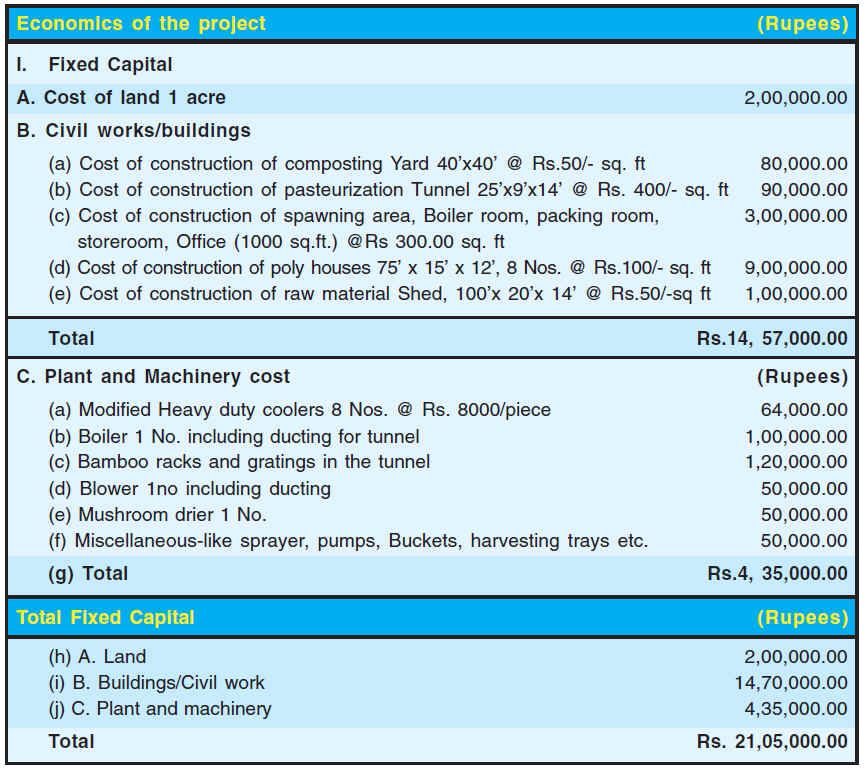
Total land required for the project would be around 1 acre.

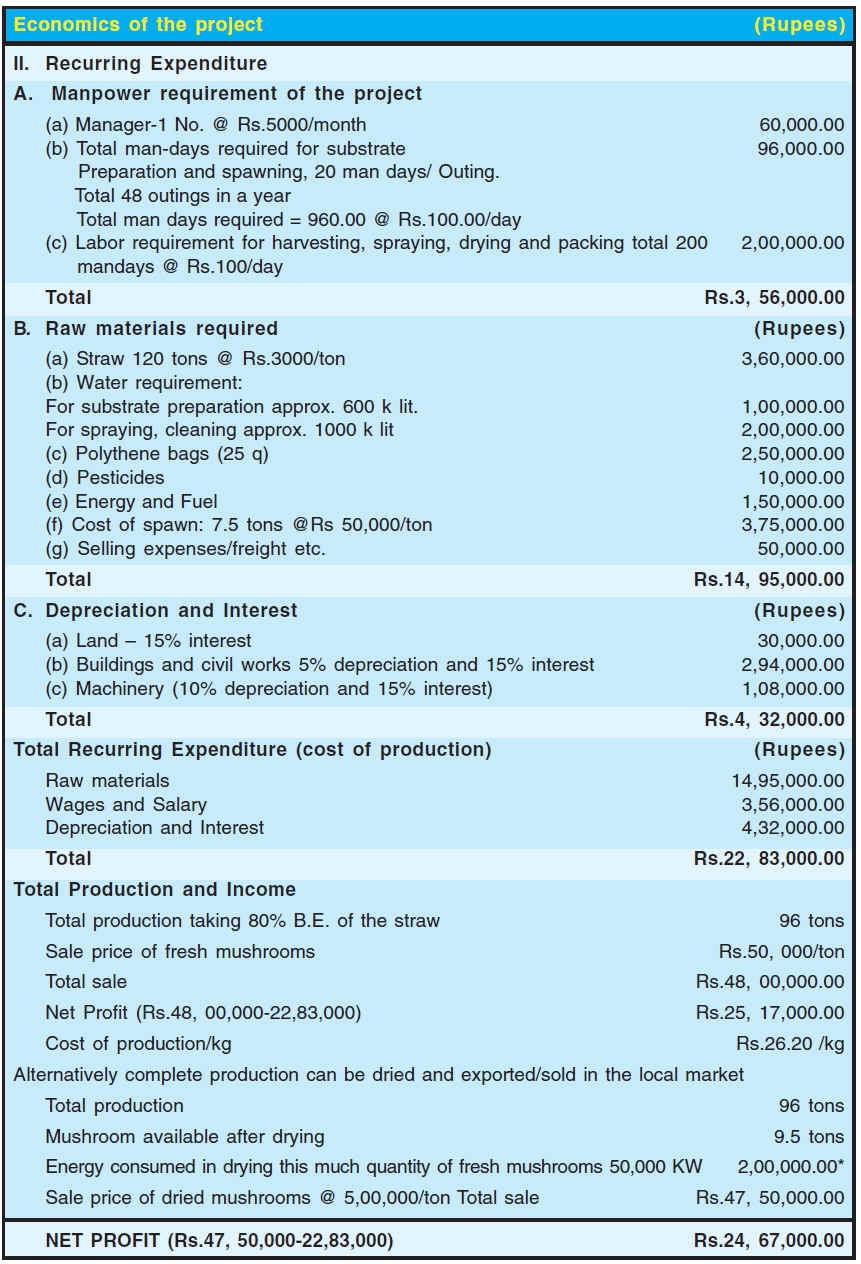
* If the produce is sun dried/solar dehydrated this expenditure can be saved and thus giving extra income.